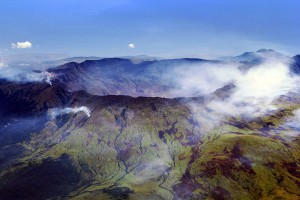The Capital Weather Gang has a great article this week on the impacts of the “Year without a Summer”, which was caused by the eruption of Mount Tambora in Indonesia in 1815. After a year the sulfuric acid droplets in the stratosphere had spread out enough to seriously decrease the sunlight and incoming solar energy, causing one of the coolest summers on record. Frost was recorded in months that had never seen frost before, and corn in its milk stage froze solid in August, rotting on the stalks when it finally defrosted. You can read more here.
